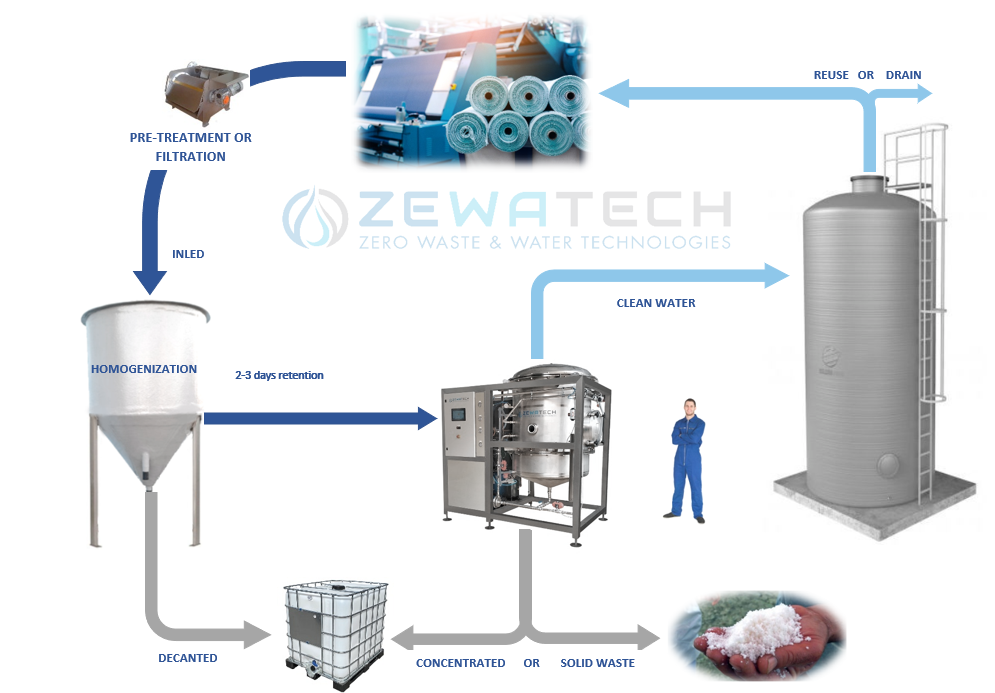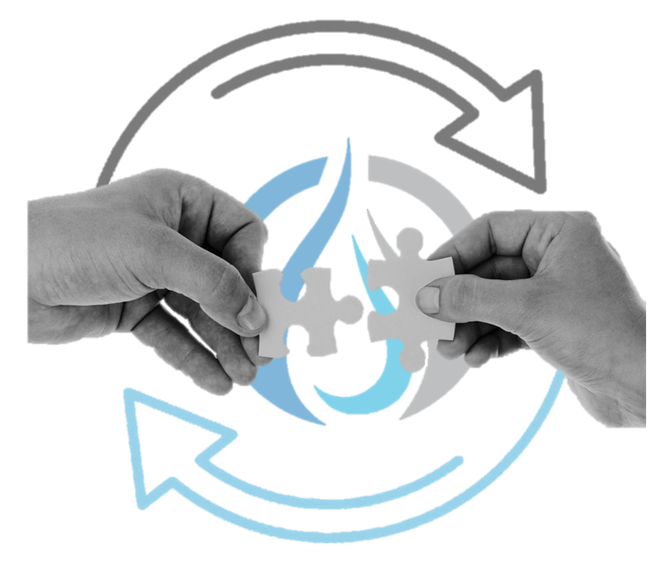TEXTILE INDUSTRY
TEXTILE INDUSTRY
The textile industry is currently the second-largest polluter on the planet. It is one of the industries with the highest water consumption and also one of the industries with the highest rates of production of contaminating liquid waste.
Wastewater from the textile industry is characterized by:
- Physicochemical properties that are challenging to eliminate.
- High levels of Chemical Oxygen Demand (COD).
- High levels of dissolved solids and suspended solids (TDS and TSS).
- Basic pH.
- Color.
- High conductivity.
- Pigments, glues, paints, dyes, biodegradable and non-biodegradable organic compounds, non-biodegradable inorganic compounds, heavy metals, phenols, pesticides, surfactants, detergents, oils and fats, high chlorine content, and salinity.

ZEWATECH SOLUTION
The textile industry generates large quantities of water with challenging physicochemical properties due to the presence of pigments, glues, paints, and dyes.
Vacuum evaporators can efficiently treat these residues and provide an effective solution while adhering to the strictest environmental regulations.
ZEWATECH offers solutions for issues related to dyeing fiber effluents, acidic and caustic baths, smoke reduction through water, ion exchange regeneration, and more, enabling water reuse and reducing disposal and sludge costs.

Diagrams
